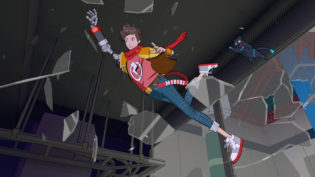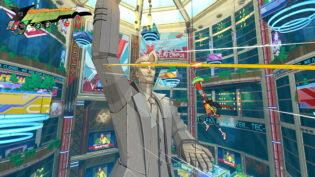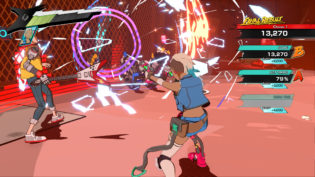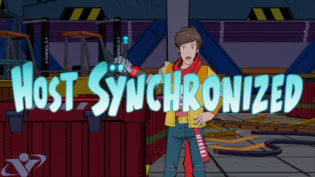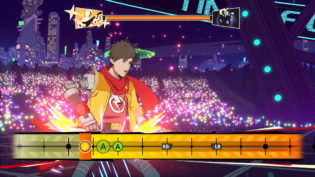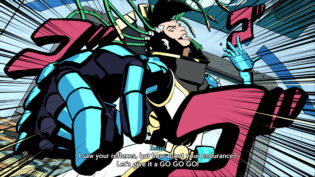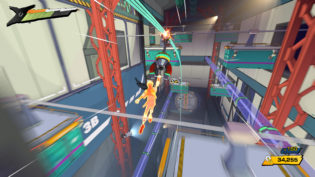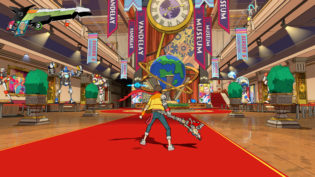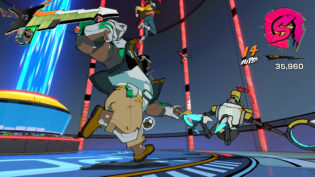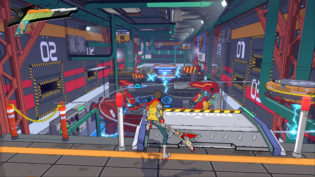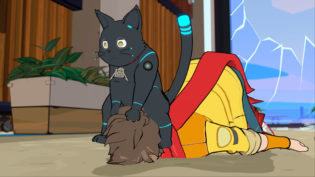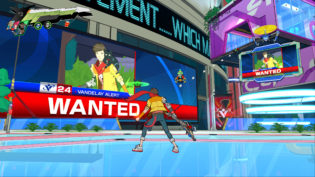Hi-Fi Rush is a curious attempt at mixing a hack and slash action adventure in the style of Devil May Cry with a rhythm game. It was surprise released at the start of 2023 by Tango Gameworks, with the game project being directed by the same director, who previously managed the wonderful The Evil Within 2. And while I love the game’s style and energy, they are the main reason I’ve enjoyed it. Often in spite of the gameplay, not because of it.
I almost never play rhythm games. I didn’t particularly enjoy the ones I’ve checked out, while the games that are usually considered to be the best in the genre are on platforms I don’t own. Not sure I would find those enjoyable either, however as while I have zero problems with rhythm and flow, I don’t really like the level of abstraction these games have in terms of transferring musical concepts to patterns. Still, I can appreciate such titles and the wave of games that tried to mix the typical rhythm game routine with other genres over the past decade has been curious. Possibly the most successful title of the kind was Crypt of the NecroDancer, which is unsurprising since that game plays like a roguelike. Transferring an already turn-based game with very simple controls and mechanics to being operated to a specific rhythm seems like natural fit. Then there were also successful Thumper and Beat Saber, which are basically a typical rhythm game, just with a different presentation. And even more recently, several titles appeared that tried to operate like a proper action game, but with rhythm game mechanics, like Metal: Hellsinger and now Hi-Fi Rush. And these don’t quite work.
As mentioned, at its core Hi-Fi Rush plays like one would expect from a DMC/Bayonetta type hack and slash action adventure game. You get linear missions to go through which feature some exploration and secrets, but are more focused on platforming, light puzzle solving and locked down arenas where your performance during the fight gets rated. The game operates using the post-Bayonetta logic of not counting the time spent outside of a fight against you, instead the mission rank is calculated from those arena fights ratings. Also important to know that unlike some examples of the genre, arenas are very limited and the game doesn’t have any big set pieces with platforming and/or puzzle challenges in it that are counted as one continuous battle. Fights can have multiple phases or have additional tricks and modifiers, but you always know when it’s fighting time and when it isn’t and you can take your time.
The big twist on this typical formula is the fact that the whole game world moves to the beat. And while your jumping and dodging moves can be triggered off-beat, all attacks (for both you and all enemies) always trigger on beat – you only queue them up if you press buttons off-beat. But it’s not like you have to wait long, as the beat of the game is constant, unbroken and is happening about once per second. You can, if you wish, also enable a visualizer of it just like in Crypt of the NecroDancer, but it’s optional as is even doing things perfectly to the beat. You can still play the game by button mashing, but it is going to be more difficult and you will get lower ratings. To make things simpler to remember, the game also ties the basic light and heavy attacks to a constant rule, where light attacks always require 1 beat to chain, heavy attacks require 2 beats to chain and all combos operate using this rule.
Which, as any experienced player of good action titles might guess, is a potential problem. Because best action titles usually let the players control the flow and the rhythm of the fight for 90% of the time, switching up and adapting to the situation as they feel like it. Occasionally this might lead to wonderful synchronization with the beat of the music, but it doesn’t have to. In Hi-Fi Rush it must be synchronized. Now, most fights don’t do anything particularly egregious, even if they occasionally start feeling like you’re in a constant QTE rather than in an action game. But there are a few enemy attacks that just break the flow entirely and take priority. While the final boss is absolutely terrible in that you have several phases of just waiting for the boss to do a particular attack before you can do anything yourself, so they are fully in control of the pace. Though, even ignoring the rhythm aspect, the game also throws in enemies that have only one mechanic working against them, throwing the pace of the fight off as soon as they appear. And several damage types that abruptly cut anything you’ve been doing for a stun animation. In general, the more the game tries to be a technical hack and slash adventure, the worse it fairs. Which is one of the reasons I didn’t finish the optional challenges that unlock past the game completion as they’ve managed to be somehow even worse than your typical challenge rooms in DMC or Bayonetta.
It doesn’t help, that other aspects of the action adventure gameplay aren’t great either. Platforming isn’t good and oftentimes judging the jump distances is almost impossible. Special partner interactions in levels are a redundant addition of rhythm mini-games into exploration and some of the mini-games have terrible patterns that go completely against the groove of the song playing in the level. Re-exploring the missions, an ability that becomes available upon game completion, is a pain. Every mission is way too long for this to feel good and unlike the other examples in the genre, you can’t even unlock those optional challenges as a separate quick travel option if you find them during your first playthrough (they are not available until after the game is completed as well). It’s just not immediately fun to replay the same way a DMC/PlatinumGames game can be.
And yet, even if the sum of its parts isn’t looking great, actually going through Hi-Fi Rush is incredibly fun. Yeah, mechanically it’s not amazing, but it’s not bad either. And most of the missteps are clearly a result of good intentions and a clear creative vision. The game is so witty, and funny, and fun – the amount of times I smiled or giggled when I saw or heard something in the cutscene or just while running through the mission is beyond counting. And even the jokes that are based on a pop culture reference are good jokes in themselves, they just get better if you get the reference. The game really knows how to do comedy well and, unfortunately, that’s a rare skill in games nowadays.
Being a rhythm game it also has a very good soundtrack. There are several licensed tracks, all of which can be disabled in favor of “we have licensed music at home” versions, that are also incredibly good. While the rest of the music and soundscape is really well done too. Whenever you like the music choices or not will come down to your own musical preferences, but what’s important is that the game feels consistent and confident with its style and it fits the gameplay well. As do the wonderfully presented cutscenes that seamlessly switch between slightly different art styles from scene to scene and also add to the good comedic timing of the game.
So, while it’s not a particularly good hack and slash action adventure and probably not a fantastic rhythm game, it’s a charming and endearing title with wonderful script, memorable and exciting moments and “good enough” gameplay that is definitely worth experiencing at least once. I really liked the game and wish there were more titles that channel this sort of energy.


